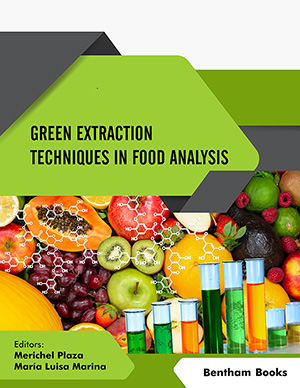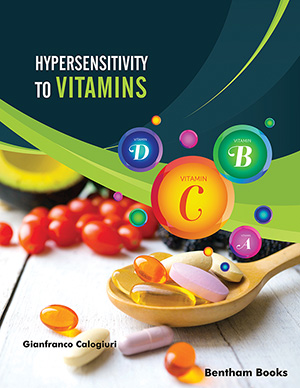Abstract
Background: Green tea is a commonly used dietary supplement and food product. Green tea contains many polyphenolic compounds known as Green Tea Catechins (GTCs). There are numerous reports exploring the potential benefit of using green tea catechins as chemotherapeutic agents to treat neoplastic disorders and infectious processes. The prevalence of cancer diagnoses, bacterial infections, and viral diseases that include SARS-CoV-2 have led to increased interest in GTCs as a therapeutic option in patients suffering from these conditions.
Objective: This concise review explores the evidence related to the therapeutic use of GTCs to treat neoplastic disorders as well as bacterial and viral infections.
Methods: PubMed, NIH, and OVID online databases were utilized to retrieve relevant scientific literature that addresses GTCs role in treating cancer and infectious disease.
Results: While there are preliminary data indicating potentially adventitious properties of GTCs, there is a paucity of large prospective clinical trial data to support the use of GTCs in a therapeutic capacity to treat these disease processes. There are documented instances of GTCs interacting with medications indicated to treat neoplastic diseases.
Conclusion: Currently, it seems that the therapeutic benefit of using GTCs is outweighed by the potential risks.
Keywords: Green tea catechin, epigallocatechin, epicatechin-3-gallate, epigallocatechin-3-gallate, cancer, antimicrobial, nutraceutical, epicatechin.
[http://dx.doi.org/10.2174/157016310791162767] [PMID: 20156139]
[http://dx.doi.org/10.1038/srep19710] [PMID: 26818408]
[http://dx.doi.org/10.3389/fmicb.2014.00434] [PMID: 25191312]
[http://dx.doi.org/10.1186/1749-8546-5-13] [PMID: 20370896]
[http://dx.doi.org/10.1016/0091-7435(92)90041-F] [PMID: 1614995]
[http://dx.doi.org/10.1002/9781119436713]
[http://dx.doi.org/10.3322/caac.21492] [PMID: 30207593]
[http://dx.doi.org/10.1038/nature01322] [PMID: 12490959]
[http://dx.doi.org/10.1093/cid/ciaa863] [PMID: 33501974]
[http://dx.doi.org/10.1111/bph.12009] [PMID: 23072320]
[http://dx.doi.org/10.3390/molecules22081337] [PMID: 28805687]
[http://dx.doi.org/10.1016/j.indcrop.2020.112464]
[http://dx.doi.org/10.1007/s42452-019-1766-8]
[PMID: 12376503]
[http://dx.doi.org/10.1016/j.toxrep.2020.02.008] [PMID: 32140423]
[http://dx.doi.org/10.1016/j.jksus.2020.08.026]
[http://dx.doi.org/10.5772/intechopen.74190]
[http://dx.doi.org/10.3945/ajcn.113.058958] [PMID: 24172307]
[http://dx.doi.org/10.1124/dmd.110.036640] [PMID: 21278283]
[http://dx.doi.org/10.2147/DDDT.S130050] [PMID: 28533679]
[http://dx.doi.org/10.1038/clpt.2013.241] [PMID: 24419562]
[http://dx.doi.org/10.1055/s-0043-100934] [PMID: 28118673]
[http://dx.doi.org/10.1080/17425255.2021.1837111] [PMID: 33054444]
[http://dx.doi.org/10.1371/journal.pone.0193074] [PMID: 29466429]
[http://dx.doi.org/10.2147/DDDT.S148257] [PMID: 30022812]
[http://dx.doi.org/10.1158/1055-9965.EPI-06-0365] [PMID: 17164372]
[http://dx.doi.org/10.1055/s-2006-931537] [PMID: 16773535]
[PMID: 8723732]
[http://dx.doi.org/10.1038/ejhg.2010.169] [PMID: 20978534]
[http://dx.doi.org/10.1111/cts.12905] [PMID: 33048477]
[http://dx.doi.org/10.1002/14651858.CD005004.pub3] [PMID: 32118296]
[http://dx.doi.org/10.3390/molecules23092284] [PMID: 30205425]
[http://dx.doi.org/10.3390/nu8090552] [PMID: 27618095]
[http://dx.doi.org/10.1038/sj.onc.1207353] [PMID: 14676829]
[http://dx.doi.org/10.3390/cells5020015] [PMID: 27043634]
[http://dx.doi.org/10.1007/s11010-012-1448-y] [PMID: 22971992]
[http://dx.doi.org/10.18632/oncotarget.13212] [PMID: 27835602]
[http://dx.doi.org/10.1111/j.1349-7006.2011.01870.x] [PMID: 21241417]
[http://dx.doi.org/10.1158/1940-6207.CAPR-09-0121] [PMID: 19892663]
[http://dx.doi.org/10.1002/cncr.11200] [PMID: 12627508]
[http://dx.doi.org/10.1158/1940-6207.CAPR-18-0147] [PMID: 30309839]
[http://dx.doi.org/10.1097/MD.0000000000006426] [PMID: 28353571]
[http://dx.doi.org/10.1158/1940-6207.CAPR-17-0187] [PMID: 28904061]
[http://dx.doi.org/10.1158/1940-6207.CAPR-17-0160] [PMID: 28765194]
[http://dx.doi.org/10.1002/ptr.6124] [PMID: 29876987]
[http://dx.doi.org/10.1136/JRAMC-07-04-08]
[http://dx.doi.org/10.1616/1476-2137.14184] [PMID: 19844590]
[http://dx.doi.org/10.1016/j.ijantimicag.2003.09.027] [PMID: 15120724]
[http://dx.doi.org/10.1016/j.ctcp.2018.10.018] [PMID: 30712716]
[http://dx.doi.org/10.1155/2018/9105261] [PMID: 30105263]
[http://dx.doi.org/10.1016/j.hermed.2021.100493]
[http://dx.doi.org/10.1093/femsle/fnx127] [PMID: 28605495]
[http://dx.doi.org/10.1378/chest.14-2171] [PMID: 25940252]
[http://dx.doi.org/10.4103/jmgims.jmgims_56_18]
[http://dx.doi.org/10.3390/nu13010054] [PMID: 33375422]
[http://dx.doi.org/10.1080/07391102.2020.1779818] [PMID: 32568613]
[http://dx.doi.org/10.1126/science.abb3405] [PMID: 32198291]
[http://dx.doi.org/10.1038/s41586-020-2223-y] [PMID: 32272481]
[http://dx.doi.org/10.1016/j.tifs.2021.05.023] [PMID: 34054222]
[http://dx.doi.org/10.1016/j.phymed.2020.153286] [PMID: 32741697]
[http://dx.doi.org/10.1101/2020.10.23.20218479]
[http://dx.doi.org/10.1016/j.antiviral.2005.06.010] [PMID: 16137775]
[http://dx.doi.org/10.1186/1472-6882-11-15] [PMID: 21338496]
[http://dx.doi.org/10.3390/molecules26134014] [PMID: 34209247]
[http://dx.doi.org/10.18632/oncotarget.12222] [PMID: 28053292]
[PMID: 12960117]
[http://dx.doi.org/10.1097/00004872-199917040-00002] [PMID: 10404946]
[http://dx.doi.org/10.1038/srep06251] [PMID: 25176280]
[http://dx.doi.org/10.1182/blood-2008-07-171389] [PMID: 19190249]
[http://dx.doi.org/10.1021/jf052857r] [PMID: 16506807]
[http://dx.doi.org/10.3390/molecules19079173] [PMID: 24988187]
























